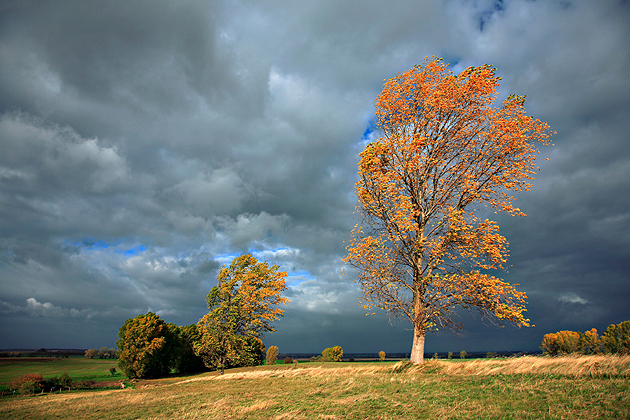
In Hot Topics posts, UConn experts comment on current events and issues unfolding in the news.
As Hurricane Katia slowly approaches the East Coast, many people are still cleaning up from Hurricane Irene, whose high winds last week caused trees to fall, leaving millions without power.
“If you want to understand how trees fall over, you have to understand their mechanical properties and the wind loads they experience,” says UConn associate professor of forest ecology Mark Rudnicki. While many trees fell during Irene, the vast majority didn’t “because trees have a lot of ways to stay up,” he says. Rudnicki’s research includes studying some of the mechanisms by which trees stay up.
Inside of a forest, the main way trees withstand heavy wind loads is by colliding with nearby trees, explains Rudnicki. Trees also streamline – adapt their shape to the wind flow and effectively have a smaller sail – reducing the wind force that is applied and thus decreasing their risk of falling.
Another, more permanent strategy to streamline is to shed branches in the wind. “After Irene, I noticed stiffer trees such as oaks lost branches, but did not see many completely fail,” Rudnicki says.
With Hurricane Katia looming near Bermuda, the main threat of more power outages is still trees, he notes. With so many trees towering over power lines in Connecticut, even with homeowner permission it would be very expensive to remove them, he says.
“I think homeowners are reluctant to allow professionals to remove or even trim their trees because we love our trees – just the way they are,” Rudnicki says. However, when a falling tree is very likely to hit a power line, its risk rating goes way up. If we focus on the fact that extreme winds are relatively infrequent, then we probably perceive the risk as too low.
It is fortunate that Irene had become a tropical storm by landfall, adds Rudnicki. The 1938 hurricane hit Connecticut as a category 3, and retained hurricane force winds all the way to Quebec. A repeat of that would cause unprecedented tree-related power outages and would take much longer to clean up, he says.
Even though arborists and urban foresters have a rigorous approach to assessing hazardous tree defects that can be used to reduce risk, it is very difficult to predict the failure of an individual tree. Trees with no hazardous defects still fail, says Rudnicki, and we need to make progress in this area.
Contact information for members of the media:
Mark Rudnicki, associate professor of forest ecology
College of Agriculture & Natural Resources
Phone: 860-486-4169 (office)
Email: Mark.Rudnicki@uconn.edu



